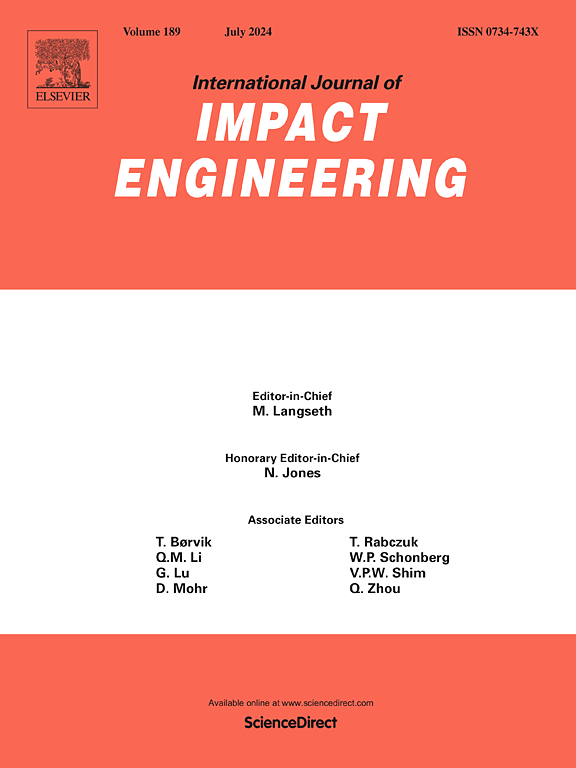Mechanical characteristics of additive manufactured biomimetic gradient circular honeycombs with nested strategy under static and dynamic loading
IF 5.1
2区 工程技术
Q1 ENGINEERING, MECHANICAL
International Journal of Impact Engineering
Pub Date : 2025-03-26
DOI:10.1016/j.ijimpeng.2025.105338
引用次数: 0
Abstract
Inspired by the microstructure of bamboo and the membrane wing structure of bats in nature, this study proposes nested self-similar gradient circular honeycomb (WNSGH) and nested non-self-similar gradient circular honeycomb (SNNGH). The deformation patterns and energy absorption properties of WNSGH and SNNGH under quasi-static compression, drop weight impact and Kolsky dynamic impact loading are systematically investigated using both experimental and finite element methods. The energy absorption mechanisms of the representative unit cells are elucidated through a series of finite element calculations. The results from both experimental studies and numerical simulations demonstrated that the nested gradient strategy could significantly enhance the specific energy absorption (SEA) of regular circular honeycomb (RCH). Specifically, under quasi-static loading, WNSGH and SNNGH exhibited increases of 66.8 % and 85 %, respectively, and improvements of 53.4 % and 14 %, respectively, under Kolsky bar dynamic impact loading. The deformation patterns of the two gradient honeycombs were found to be sensitive to the loading rate. Further findings indicated that the energy absorption performance of WNSGH and SNNGH outperformed many other existing circular honeycomb structures with different gradient strategies.
静态和动态载荷下增材制造具有嵌套策略的仿生梯度圆形蜂窝的力学特性
本研究的灵感来源于竹子的微观结构和自然界蝙蝠的膜翼结构,提出了巢式自相似梯度圆形蜂窝(WNSGH)和巢式非自相似梯度圆形蜂窝(SNNGH)。采用实验和有限元相结合的方法,系统研究了WNSGH和SNNGH在准静态压缩、落锤冲击和Kolsky动态冲击载荷作用下的变形模式和能量吸收特性。通过一系列的有限元计算,阐明了具有代表性的单元胞的吸能机理。实验研究和数值模拟结果表明,嵌套梯度策略可以显著提高规则圆形蜂窝的比能量吸收(SEA)。其中,准静态加载下,WNSGH和SNNGH分别提高了66.8%和85%,Kolsky bar动冲击加载下分别提高了53.4%和14%。结果表明,两种梯度蜂窝的变形模式对加载速率非常敏感。进一步的研究结果表明,采用不同梯度策略的WNSGH和snnggh的吸能性能优于许多其他现有的圆形蜂窝结构。
本文章由计算机程序翻译,如有差异,请以英文原文为准。
求助全文
约1分钟内获得全文
求助全文
来源期刊

International Journal of Impact Engineering
工程技术-工程:机械
CiteScore
8.70
自引率
13.70%
发文量
241
审稿时长
52 days
期刊介绍:
The International Journal of Impact Engineering, established in 1983 publishes original research findings related to the response of structures, components and materials subjected to impact, blast and high-rate loading. Areas relevant to the journal encompass the following general topics and those associated with them:
-Behaviour and failure of structures and materials under impact and blast loading
-Systems for protection and absorption of impact and blast loading
-Terminal ballistics
-Dynamic behaviour and failure of materials including plasticity and fracture
-Stress waves
-Structural crashworthiness
-High-rate mechanical and forming processes
-Impact, blast and high-rate loading/measurement techniques and their applications
 求助内容:
求助内容: 应助结果提醒方式:
应助结果提醒方式:


